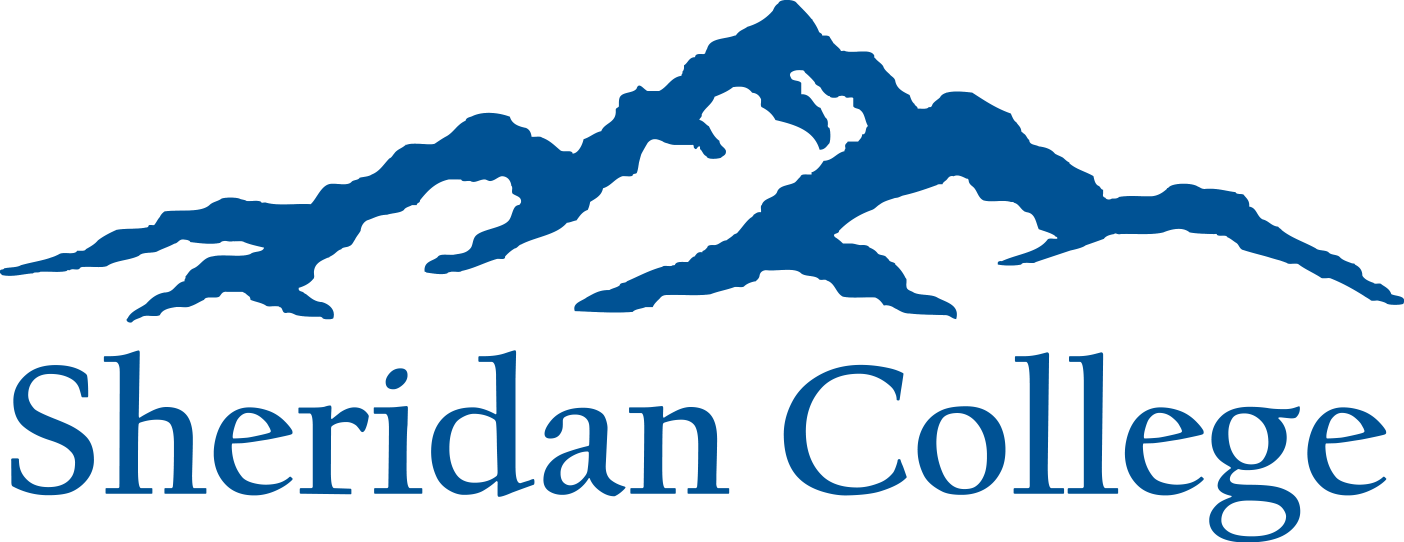Sheridan College Lectures
We are proud to present a variety of engaging and informative lectures that are free and open to both our students and our community.

Lectures are free and open to the public.
 Wednesday, Apr. 10, 7:00pm – Kinnison Hall
Wednesday, Apr. 10, 7:00pm – Kinnison Hall
THE EDGE OF YOUR COMFORT ZONE: My Unconventional Path to Scientific Leadership
With Kelly Kincaid, co-founder of two Santa Cruz, CA-based biotechnology startup companies that develop DNA sequencing and analysis tools for applications in clinical research (Claret Bioscience) and for solving cold cases (Astrea Forensics).
Abstract:
Embark on a journey through varied landscapes—from pit orchestras to archaeological digs, DNA laboratories, and entrepreneurial ventures—as we unravel the myth of linear career trajectories. Discover how embracing discomfort has propelled me through diverse professions and unexpected challenges, illustrating that new skills and ways of thinking can be acquired at any stage of life. I’ll share insights on the unique challenges of being a woman in leadership in male-dominated environments. Drawing from my experiences as a rock climber, I’ll also provide perspectives on risk-taking and resilience. Finally, I’ll discuss my current endeavor leading Astrea Forensics in the midst of a technological paradigm shift, using new scientific advancements to solving forensic cold cases. Join me in redefining success and embracing discomfort as a vehicle for personal and professional growth.
Biosketch:
Kelly Harkins Kincaid is the co-founder of two Santa Cruz, CA-based biotechnology startup companies that develop DNA sequencing and analysis tools for applications in clinical research (Claret Bioscience) and for solving cold cases (Astrea Forensics). Dr. Harkins Kincaid has focused her career on the recovery and analysis of degraded or ancient DNA. Her academic research in bioarchaeology used paleogenomic methods and human remains to investigate the evolution of pathogens and emergence of human diseases over time. As an NSF postdoctoral fellow at University of California Santa Cruz, she refocused on DNA technology and assay development. This work led to the spinout of her first company in 2017.

Thursday, Apr. 11, 6:00pm
at Sheridan College Rm. W235, in Whitney Academic Center.
“A Lakota Winter Count”
With Donovin Sprague, History Faculty
Mr. Sprague will share the importance of the yearly historical recording of the winter buffalo count as it pertains to the Plains Indians. Donovin, a Lakota tribal historian and archivist, recently discovered an undocumented winter count which was recorded by his great, great grandfather. He will describe the winter count drawings and stories recorded on buffalo or deer hides.
Donovin Sprague serves as history faculty at Sheridan College. He is an enrolled member of the Cheyenne River Sioux Tribe as well as Minnicoujou Lakota and part Cheyenne. He has taught at Black Hills State University and worked at University of Iowa, Iowa State University, University of Northern Iowa, University of Wyoming, and Oglala Lakota College. Donovin is an author of ten books and has presented at major universities, museums and cultural centers throughout the U.S., Canada and Europe, including Culver Military Academies, Notre Dame and Purdue in Indiana.
The Thickman Faculty Lecture Series is hosted by the Sheridan College Foundation and is funded by the Thickman Lecture Endowment.
Sheridan College is located at 1 Whitney Way in Sheridan. For more information about this or upcoming lectures, contact the Sheridan College Foundation at 307-675-0700.
Past Lectures
 Wednesday, Mar. 13, 7:00pm
Wednesday, Mar. 13, 7:00pm
Fossil Birds of Wyoming
With JP Cavigelli, Collections Manager, Tate Geological Museum at Casper College
Abstract:
Wyoming is well known for its vertebrate fossil deposits from dinosaurs to fishes to mammals. But what about birds? Birds are generally rare as fossils but Wyoming has produced a respectable suite of bird fossils, many of which have helped describe a pathway for the evolution of birds. This talk is a grand tour of Wyoming’s avian fossil record. And while we are at it… What is a bird?
Biosketch:
Jean-Pierre Cavigelli (JP) has been Prep Lab Manager and Field Trip Organizer and Collections Manager at that Tate Geological Museum at Casper College since 2004. He has been in charge of many field outings and the preparation of many fossil vertebrates from a mammoth and a T rex to micro-mammal teeth. Before this he spent two years as Collections Manager at the University of Wyoming where he designed the database he still uses. JP has also been doing freelance fossil preparation in his private lab for private collectors and academic paleontologists. He has had the good fortune of having been invited to join paleontological expeditions to Mongolia, Niger, Tanzania, Alaska and North Dakota. When he is not involved with fossils JP enjoys birdwatching, traveling, and hanging out with his supercalifragilisticexpialidocious wife (and has recently hung up his skates after a 30-year hockey career).
Thursday, Feb. 22, 6:00pm
at Sheridan College Rm. W153, in Whitney Academic Center.
“Freedom of Speech: Then and Now”
With Michael Thomas, MA, Adjunct History Faculty
View PDF of lecture presentation
This lecture will cover: History of the 1st Amendment, Inclusion of Freedom of Speech in the Bill of Rights, Interpretation of Freedom of Speech through the power of Judicial Review, Issues of Freedom of Speech today, Censorship & Safe Spaces, and Social Media.
Michael Thomas serves as adjunct faculty at Sheridan & Gillette College teaching History of Wyoming and Wyoming Government. He holds an associate degree in history from Casper College, a Bachelor of Arts degree in secondary education and social studies from the University of Wyoming, as well as a Master of Arts degree in American History from American Public University. Michael is a public-school teacher with thirteen years of experience teaching American Government and social studies. He also coaches the successful Sheridan High School “We the People” team.
 Wednesday, Feb. 7, 7:00pm
Wednesday, Feb. 7, 7:00pm
Recovering the Aplomado Falcon within the U.S.
With Brian Mutch, Director, Aplomado Recovery Program
The Peregrine Fund
Abstract:
The Northern Aplomado Falcon was extirpated throughout its’ US range by 1952. A changing habitat from grassland to invasive species and the loss of that same important habitat to agriculture is widely accepted as the cause of the falcon’s demise. In 1986 the United States Fish and Wildlife Service listed the species as endangered. The Peregrine Fund was asked if they might undertake a recovery effort, similar to that of the effort underway at the time to recover the endangered Peregrine Falcon. Captive propagation and reintroductions of Aplomado Falcons occurred from 1990 – 2013, and The Peregrine Fund was successful at re-establishing a population of Aplomado Falcons throughout their historical, Texas Gulf Coast range. However, many recovery challenges still exist before the species can be considered for delisting.
Biosketch:
Brian was born and grew up in Missoula, MT where he also completed a Bachelor of Science degree at the University of Montana in biology. His passions were all wildlife- and wildland-oriented but the art of falconry and hunting with Peregrine Falcons and Gyrfalcons always stood out and continue today. Through falconry, Brian would eventually meet several board members and employees of The Peregrine Fund who encouraged his employment with them. Brian has worked for The Peregrine Fund for 35 years. Duties have included working on many of their species recovery efforts to include Peregrine Falcons, Harpy Eagles, Aplomado Falcons, Orange-breasted Falcons, and California Condors. He also assisted with several research projects in Central America, Mexico, and in northwest Greenland and currently serves as the Director of the Aplomado Recovery Program.
 Thursday, Nov. 9, 6:00pm
Thursday, Nov. 9, 6:00pm
in Bomber Mtn Civic Center Rm. #103, in Buffalo, WY.
“AI – The Game Changing Technology that Educators and Society Must Reckon with NOW!”
With Steven Miller, PhD, Math Faculty
The lecture will confront this primary question: “As Artificial Intelligence is rapidly affecting our daily lives, do we embrace AI and teach how to use it effectively and morally, or do we bristle at this technology and reject it?”
Dr. Miller will provide a definition, the history, and the anticipated direction of Artificial Intelligence. Actual scenarios of how it affects our everyday life will be presented, as well as the ramifications it could have on education and in society.
Dr. Steven Miller is the Director of Curriculum and Learning at Johnson County School District #1 and an adjunct math faculty at Sheridan College in Johnson County. He has been in the education world in many capacities for 20 years. Research, data, and personalized learning and application are educational passions for him as we all continue on this journey.
 Wednesday, Dec. 6, 7:00pm
Wednesday, Dec. 6, 7:00pm
Geoengineering for Climate Change
With Robert McDowell, Catalyst Consultant
Abstract:
The earth is rapidly heating up, with October’s temperatures breaking all-time records. Can we use Science and Technology to manipulate Nature to ease, or even reverse, the negative consequences of all that heat building up in our oceans and atmosphere? This presentation will discuss why Geoengineering is needed and will explore several new ideas – as well as a few old ones – for combating global climate change.
Biosketch:
Bob graduated with a B.S. degree from Villanova University while working in the Research & Development group of Johnson Matthey, the world’s largest automotive catalyst company. He was part of the team that brought the first commercial Three-Way Catalyst from concept into production, and has manufactured emission control catalysts on four continents. He currently advises a diverse set of clients working in R&D and prototyping areas, including lithium ion batteries, biofuels, precious metal recycling, and of course, emission control catalysts.
 Wednesday, Oct. 18, 7:00pm
Wednesday, Oct. 18, 7:00pm
Archeology in Wyoming
With John Laughlin, Natural Resources Program Supervisor for WDOT, Cheyenne, WY
Abstract:
The archaeology of Wyoming encompasses at least 13,000 years. We are home to archaeological sites spanning the time from ancient Mammoth and Bison kills to much more recent evidence of fur traders, homesteaders and even the Cold War. This program will provide a broad overview of Wyoming’s rich archaeological history throughout time; from the earliest findings to contemporary research.
Biosketch:
John is the Natural Resources Program Supervisor for the Wyoming Department of Transportation, Environmental Services program. Prior to that he spent 20 years working for Wyoming State Parks and Cultural Resources as a Staff Archaeologist. He received a B.A. in Communication Studies from the University of Iowa in 1991. After a two-year stint in the Peace Corps (98-99), John returned to school and received a Master’s Degree in Anthropology in 2005 from the University of Wyoming. His areas of interest include the initial peopling of the Americas, flintknapping, and human response to environmental change.
 Thursday, Sept. 21, 6:00pm
Thursday, Sept. 21, 6:00pm
in Whitney Room #235
Impacting Homelessness from a Systems Perspective
With Kristine Mantey, MBA, Business Faculty
Mantey will discuss how social service providers can use systems thinking to improve their decision-making. She will show that when these providers define the goals that they have for their participants and their organization, they can then monitor progress toward those goals. By redefining decision-making in social work, organizations can focus on the points where they are making the greatest impact and an organization’s effectiveness can not only be increased but it can be proven.
In various positions in finance and education over the past two decades, Kristine Mantey has worked on projects involving underserved and homeless populations. The experiences and information gained from these projects led to her involvement in the Acres of Diamonds program, which is successfully helping homeless women become self-sufficient. In her research, she has learned the importance of data-supported techniques for strategic decision-making and evaluating successful outcomes for societal problems.
 Wednesday, Sept. 20, 7:00pm
Wednesday, Sept. 20, 7:00pm
Wolverine Surveys in Wyoming
With Heather Obrien, Nongame Mammal Biologist, WGFD Casper
Abstract:
Wolverines are an elusive, solitary species of dense forest habitats in the western United States and Canada. In recent years, wildlife biologists from a number of agencies have collaborated to collectively study and better understand the full extent of wolverine range and distribution. The evening’s program will discuss wolverine ecology, occupancy survey methods and survey results from Wyoming.
Biosketch:
Heather is the statewide nongame mammal biologist for the Wyoming Game & Fish Department, based in Casper. She received her B.S. degree in Wildlife Ecology from the University of Wisconsin-Madison in 1996, and her M.S. degree studying white-tailed deer densities and herbivory from the University of Wisconsin-Milwaukee in 2005. Her areas of interest include population estimation and ecology, behavioral ecology, fence and road ecology as it relates to wildlife movement, and conservation of sensitive species.
A Passon for the Seed: The History and Science of Plant Breeding
Speaker: Dr. Donna Harris, Assistant Professor, Dept of Plant Science, UW
Abstract: Plant breeding is the genetic improvement of plants to meet the needs of humans. This began when people in ancient times began the process of domesticating wild species of plants to make them easier to cultivate. The characteristics needed for the improvement of plants for human use must be clearly defined into breeding objectives. Once objectives are defined, a plant breeder creates a large population of plant materials that are genetically different from each other and begins to identify which plants best meet the breeding objectives. Then, these new improved varieties are marketed and distributed to growers. Long-term success of a breeding program often requires that new plant material is continually added to the breeding program. Current research in my lab is focused on early maturing dry beans that maintain yield and upright stature, drought tolerant field peas, and native grasses for restoration purposes on rangelands.
Biosketch: Donna Harris is an Assistant Professor at the University of Wyoming in the Department of Plant Sciences. She is located at the Sheridan Research & Extension Center in Sheridan WY. Her research is in the field of plant breeding and genetics where she is working on several relevant crops to Wyoming with a focus on the current and potential needs of both the producer and consumer. Prior to beginning her position at the University of Wyoming Donna was with BASF Vegetable Seeds where she worked as a Senior Scientist in tomato prebreeding located in Acampo, CA. In her role, she led the discovery-based research of the US tomato prebreeding program where she managed and participated in global projects to ensure a constant flow of value-added traits into commercial varieties. She earned her PhD at the University of Georgia in Plant Breeding, Genetics, and Genomics. For five years, between her masters and doctorate, she worked as a corn breeder in the seed industry.
The Bighorn River Then and Now
Speaker: Bob Krumm, Writer, Naturalist, Fly-fishing Guide
Abstract: The Bighorn River at Ft. Smith, Montana was changed from a muddy, warm plains stream to a cool, clear trout stream when Yellowtail Dam was completed in 1966. Since that time, the river has become one of the most famous trout streams in the United States. Changes have occurred and more will come as the river ecosystem evolves and the fishing techniques change. Bob Krumm has guided on the river since 1985 and has views on what was, what is, and what will come.
Biosketch: Bob Krumm earned a Bachelor of Arts degree in Biology from Albion College in Michigan. He went on to earn his Masters degree in Zoology with an emphasis in Wildlife Management from the University of Wyoming. He is a writer, a natural historian, and life-long instructor and guide of fly fishing.
Bob has written various books, including The Rocky Mountain Berry Book, and numerous magazine articles for various magazines including Fly Fisherman, Fly Rod & Reel, In Fisherman, American Angler, Fly Fisher, Fly Tyer, and Flyfishing and Tying Journal. He also wrote a popular Outdoor column for the Billings Gazette for nearly 40 years, up to 2018. As a renowned fishing guide, he has guided on the Bighorn River in Montana since 1985, and prior to that, on the Snake, Green, and New Fork Rivers.
Why is Stress Such a Pain in the Neck
Speaker: Dr. Rachel Kristiansen
Abstract: Stress: it is something with which we’re all familiar, but do you truly understand how it affects you?
In this lecture, Dr. Kristiansen will explain how both acute and chronic stress manifests in the brain and body, how it affects our physical and mental health, and most importantly, how to reduce it!
Coal to Carbon Products
Speaker: Garrett Lindemann, Director of Life Sciences, RAMACO Carbon
Abstract: RAMACO Carbon is leading the development of new carbon-based materials as the building blocks for the future era of carbon manufacturing. Our vision is being accomplished by utilizing the carbon in coal to manufacture building blocks such as carbon fibers and graphene. This vision is captured in our two mission statements, “No molecule left behind” and “Coal is too valuable to burn.” The carbon content of the local sub-bituminous coal is approximately 50% carbon by dry weight and contains other valuable chemicals such as Nitrogen, Phosphorous, Sulphur, Potassium, and Copper. All of the chemicals in coal can be used to manufacture higher-value products from a low-value feedstock. Viewing coal as a “Fossil Fuel” needs to be left in the past and changed to viewing coal as a “Carbon Ore.”
Science Museum Lecture Series: The Artemis Program: NASA’s Return to the Moon
Speaker: Andrew Young, Physics and Astronomy Instructor, Casper College
Abstract: In this presentation, we will look at the upcoming NASA program to bring humanity back to the Moon. We begin with a quick recap of the Apollo program and its closing days. Afterwards, we fast forward several decades to the origins of the Artemis program. From there, we review the mission goals and current accomplishments leading up to Artemis 1. Finally, we conclude with an evaluation of the next milestones and plans for the future missions to Mars.
Biosketch: Dr. Andrew Young was born in Boston, Massachusetts and grew up in the neighboring suburb of Brookline (home of JFK and Conan O’Brien). After graduating high school, he attended Boston University where he earned a Bachelor’s degree in physics and astronomy, and a minor in mathematics and archaeology. He spent some time working at NASA’s Goddard Space Flight Center and Los Alamos National Laboratory after college. Dr. Young transitioned to graduate school shortly after, where he earned a Master’s and Ph.D. in astrophysics from the University of Minnesota. After working out east for a few years, Dr. Young arrived at Casper College in 2005.
Dr. Young’s past research interests include blazars, space weather, aurora borealis, astrophysical search engines, and AGNs. His current primary academic duties consist of teaching live and on-line astronomy and physics courses at Casper College. He has served as a board member for the Tate Geological Museum, and currently serves as a board member for the Wyoming NASA Space Grant Consortium and the Pearson Publishing Physics Advisory Board. Dr. Young is also the Wyoming RadNet systems operator for the Environmental Protection Agency.
Recognition includes the Wyoming First Lego League Outstanding Volunteer Award (2014), the Wyoming Science Teacher’s Association Friend of Science Award (2017), the Wyoming Department of Education Post Secondary STEAM Educator of the Year Award (2019), Casper College Rosenthal Outstanding Educator Award (2020), and the MacMillan Lab Innovator Award – Honorable Mention (2021).
Thickman Faculty Lecture Series: Creativity in Captivity: Viktor Ullmann’s Der Kaiser von Atlantis
Speaker: Dr. Rachel Bergman, Director of Academic Initiatives and Arts Outreach at Sheridan College
Abstract: Der Kaiser von Atlantis is a one-act opera by Viktor Ullmann with a libretto by Peter Kien. They collaborated on the work in 1943 while interned in the Nazi concentration camp Theresienstadt. Dr. Bergman will discuss this compelling opera and its composer in the context of Theresienstadt and WWII.
Biosketch: Dr. Rachel Bergman is Director of Academic Initiatives and Arts Outreach and Director of the Sheridan College Flute Choir. Her research focuses on the music of Viktor Ullmann, an Austro-Hungarian composer who was killed in the Holocaust. Dr. Bergman’s publications include a book chapter in Singing in Signs: New Semiotic Explorations of Opera (Oxford University Press, 2020) and articles and reviews in The Opera Journal and Gamut: Online Journal of the Music Theory Society of the Mid-Atlantic. She has presented papers and lecture-recitals at numerous conferences regionally, nationally, and internationally. Prior to coming to Sheridan College, Dr. Bergman served as tenured Associate Professor of Music Theory and Director of Graduate Studies for the School of Music at George Mason University in Fairfax, Virginia. She earned a PhD in Music Theory from Yale University and a Bachelor of Arts degree in Music and Mathematics from Skidmore College.
Researching the Microbiome: An Exploration of Microbial Communities
Speaker: Stephanie Servetas, Microbiologist, National Institute of Standards and Technology
Abstract: It is an exciting time in microbiology as microbes are no longer cast only as the villains but are increasingly being recognized for their beneficial roles. Scientists are trying to harness these favorable attributes to improve human health, food security, energy production, and many other areas. Microbiome advances aren’t only being described in scientific journals, they have reached mainstream marketing for everyday items including lotion, yogurt, pet foods, and gardening. This talk will introduce microbiome science, highlight the beneficial role microbial communities play, and provide insights into the state of the art and the future of microbiome research.
Biosketch: Stephanie is a Microbiologist in the Complex Microbial Systems Group at the National Institute of Standards and Technology. Her research focuses on the development and characterization of microbial materials (genetic, whole organism, and communities) that can serve as tools for next generation diagnostics, biosurveillance efforts, and microbial therapeutics (bugs as drugs). Current projects include development of a multi’omic human gut microbiome reference material; development of methods, materials, and validation studies for biosurveillance including wastewater surveillance; and production of a reference material to support increased testing capacity in response to the recent MPXV outbreak. Stephanie joined NIST as a National Research Council Postdoctoral Fellow in 2018, following completion of her PhD in the Emerging Infectious Diseases Program at the Uniformed Services University of Health Sciences (USUHS) in Bethesda, MD. The topic of her doctoral research was Helicobacter pylori , the only recognized bacterial carcinogen. Stephanie works remotely for NIST and is based in Sheridan. She is looking forward to working with Sheridan College on collaborative research projects.
Fire, Climate Change and Forest Resilience in Sub-Boreal Forests
Speaker: Dr. Jed Meunier, Research Scientist, Wisconsin DNR, Madison, WI
Abstract:In large parts of the world disturbance is a primary driver of ecosystem structure and function which influences, and is influenced by, climate change. In the western US, forest types and their associated fire regimes are predictable based on elevational gradients of temperature and precipitation. Thus, in these systems the contributions of forests as a catalyst for further climate change impacts (via emissions from wildfire or carbon sink from reforestation) are better understood. Despite the preponderance of large western wildfires in recent years, the disturbance dynamics of northern sub boreal forests have an outsized role in global climate regulation yet in many cases we lack basic understanding of disturbance patterns. This talk will highlight new research that illuminates the fire ecology in northern sub boreal forests and make general comparisons to the mountainous west, boreal, and other forests in terms of global climate regulation.
Biosketch: Jed is an ecologist and research scientist within the Wisconsin Department of Natural Resources, Division of Forestry. His research interests range from individual species attributes to landscape ecology with a unifying theme of understanding how forces of climate and disturbance drive ecological change and how we can in turn manage for resilient systems. His dissertation research was on fire ecology in northern Mexico investigating spatial and temporal aspects of fire in relation to climate and land use over several centuries. Jed received his M.S. in the wildlife ecology department at the University of Wisconsin Madison, studying the effects of hunting on
declining American woodcock populations. Jed considers himself lucky to spend his time asking questions and through applied research assisting in the management of our many treasures.
The 1906-08 Ute Journey Across Wyoming, presented by Donovin Sprague
Speaker: Donovin Sprague, Faculty Sheridan College
Abstract: Background history on U.S. Indian policy of the times pertaining to the Ute Tribe. Decision to leave Ute reservation and events which transpired during journey across Wyoming from Wyoming newspaper accounts of 1906-08 event. The 100 –year reunion in 2006 when Donovin conducted a tour with Ute descendants of those who took the journey 100 years earlier. The adoption of the Utes and Donovin’s home tribe.
Biosketch: Donovin Sprague is a history faculty member at Sheridan College. He is an author of ten books, historian, and instructor. He was born and raised on the Cheyenne River Sioux Reservation in South Dakota and is an enrolled member of that tribe. Donovin has worked for University of Iowa, Iowa State University, University of Northern Iowa, Black Hills State University, and Oglala Lakota College.
Donovin’s presentations and consulting have taken him to Culver Military Academies, Culver, Indiana; Notre Dame, South Bend, Indiana; Purdue, Lafayette, Indiana; University of Frankfurt, Germany; U.S. Army Base Wiesbaden, Germany, and Paris, France. He conducts tours and has been a frequent traveler and speaker in the Sheridan area. He has presented at major universities, museums, and cultural centers throughout the U.S., Canada, and Europe.
The Green River Formation: A Paleontological Overview
Speaker: JP Cavigelli, Collections Manager, Tate Geological Museum at Casper College
Abstract: This talk will provide a broad overview of the paleontology of the Green River Formation.
Biosketch: Jean-Pierre Cavigelli (JP) is collections manager at the Tate Geological Museum at Casper College. As a biology major at the University of Chicago, JP also became interested in paleontology, which led him to a summer spent in Wyoming in 1983 doing field work in search of small Cretaceous mammal teeth with a UW team. JP fell in love with Wyoming but left for a five-year adventure in fun and poverty as a ski bum and whitewater rafting guide in Colorado and Australia. JP came back to Wyoming in 1990 to be part of a paleontology field crew. JP has had the good fortune of having been invited to join international paleontological expeditions to Mongolia, Niger, Tanzania and North Dakota. In his 11 years at the Tate Museum he has led collecting trips all over the state to collect small and large fossils from Dee the Mammoth and Lee Rex to microscopic mammal teeth and really old insects. When he is not involved with fossils JP enjoys birdwatching, traveling and playing hockey.
Chronic Wasting Disease
Speaker: Hank Edwards, Supervisor, Wildlife Health Lab, WGFD, Laramie
Abstract: Chronic wasting disease (CWD) is a fatal nervous system disease of cervids (the deer family) caused by an infectious protein or prion. The disease was first detected in Wyoming in 1985, and has since spread to 34 out of 37 mule deer herd units and 15 of the 36 elk herd units in the state. To date, prevalence of chronic wasting disease has exceeded 65% in mule deer and 14% in elk in some hunt areas. Not all herds are experiencing high CWD prevalence, but wildlife managers are concerned about how this disease may affect cervid populations in the future. This presentation will provide an update on what we know about CWD as a disease, in the state, and in the Sheridan Region, with time for questions at the end.
Biosketch: Hank Edwards has led the Wyoming Game and Fish Department’s Wildlife Health Laboratory (WHL) for over 25 years. The WHL is responsible for disease surveillance in wildlife, but primarily focuses on brucellosis in elk and bison; chronic wasting disease in deer, elk and moose; and respiratory disease in bighorn sheep. Hank received a Bachelor of Science degree in Molecular Biology in 1991 and a Master’s in Veterinary Science in 1995 from the University of Wyoming.
Practical Applications of Music and Neuroscience Knowledge
Speaker: Carly Flaagan, Adjunct Faculty Sheridan College
Abstract:The lecture will cover the basic principles of cognitive neuroscience, music cognition and cortical activation and music, the benefits of music in relation to the brain, and practical applications of this knowledge such as purposeful music listening, music for relaxation, active engagement with music, and music in regard to child development.
Biosketch:Carly Flaagan received her B.M. in music therapy at the University of North Dakota in 2015 after completing her internship at Musicworx Inc. in San Deigo, CA. Since then, she has been a practicing music therapist providing individualized care for persons of all ages. In 2013, Carly was selected as the winner of the E.Thayer Gaston writing competition for her research paper titled “A Survey on Music Therapy and Speech-Language Pathology Collaboration” given by the American Music Therapy Association. Carly enjoys advocating for music therapy through public speaking and was selected to present at TedxGrandForks in 2014. More recently, Carly has presented at the national music therapy conference in 2018 regarding music and cognition research. Carly completed her graduate degree at CSU in 2020 earning a Master’s of Music Therapy during which Carly researched differences in cortical activation between live and recorded music. In addition to providing music therapy services and fulfilling her role as Internship Director for Integrated Therapy of Northern Colorado, Carly is currently an adjunct professor for Sheridan College and a STEM Grants Coordinator for Front Range Community College.
Ecotoxicology and Freshwater Stream Bioassessments
Speaker: Lora Munroe (Hosman), Faculty Sheridan College
Abstract: Ecotoxicology evaluates the effects of a toxicant on an ecosystem. Ecosystems vary in their complexity and evaluating if, or how, a system is impacted can be difficult. Freshwater aquatic ecosystems can vary according to climate, topography, soil type and size of water body, for example. In evaluating if a system is impacted, one would need to establish what the biological community in that region should look like if it were not affected and compare it to that reference condition. The EPA has developed a rapid bioassessment protocol for freshwater wadeable streams to do just that in a cost effective and time efficient manner. Sampling the biotic community and the physical parameters of an ecosystem can not only tell us if the system is impacted, but can also give some insight as to what the underlying problem may be. This presentation will discuss the use and application of EPA’s RBP for freshwater wadeable streams and how biodiversity is used as a measure of health of an ecosystem.
Biosketch: Lora earned her Master’s degree in Environmental Biology at Arkansas State University in 2001 while working in an EPA certified Ecotoxicology Research facility. In eight years at the laboratory, she worked on several projects funded by the USDA, the FDA, and numerous industries across the southeastern United States. These projects varied from EPA mandated biomonitoring and assessment of freshwater streams for EPA’s 303d list, to population assessments of endangered freshwater mussels and evaluating the fate and effects of aquaculture therapeutants on receiving streams. Lora started teaching at Arkansas State University in 2006 and found her way to Wyoming as an instructor at Sheridan College in 2019.
“Major Fourth Be With You – Music from Star Wars”
Speaker: Dr. Christian Erickson, Faculty Sheridan College
Abstract: Dr. Erickson discusses some of the music from the Star Wars Suite that will be played by the SC Symphony Orchestra on April 2nd.
The lecture will include live and recorded audio examples, as well as numerous video clips. All lovers of film music and Star Wars will enjoy this presentation!
Biosketch: Christian Erickson is chair of the Visual and Performing Arts Division at Sheridan College. He holds degrees in music theory and composition from the University of Wyoming, the University of Nebraska, and the University of Colorado. Dr. Erickson currently makes his home in the mountain hamlet of Story, WY where he divides his time outside of teaching between completing commissions for original compositions, providing orchestration and notation services, and designing sound for live theatre.
Chemistry of the Fossils: Insight to Paleoclimate of the Kaiparowits Formation Using Stable Isotope Geochemistry
Speaker: Daigo Yamamura, Ph.D., Science Faculty, Miles Community College
Abstract: The Late Campanian-aged Kaiparowits Formation (72.5–76.6 Ma) is a thick, fossiliferous fluvio-overbank-lacustrine complex deposited in south-central Utah. Host to one of the richest, most diverse Campanian terrestrial fossil records in North America, the physical environment of the Kaiparowits ecosystem, particularly the dynamics of the hydrological system, remains obscure. Isotopic compositions of serially sampled tooth enamel phosphate (δ18Op) from tyrannosaur teeth were analyzed to see if they held data that could clarify the palaeohydrology of the Kaiparowits Formation. The δ18Ow calculated from tyrannosaur was low, suggesting that isotopically-light, high-altitude runoff strongly influenced the local hydrology of the Kaiparowits Formation. This study provides unique insight to the paleoclimate during the Campanian, and conducting similar studies in Montana and Wyoming would provide greater insight to the Cretaceous paleoclimate and paleoecology.
Biosketch: Daigo is a new Science Faculty at Miles Community College and previously taught at University of Arkansas – Fort Smith as a visiting Assistant Professor. Other professional experiences include mitigation paleontologist at SWCA Environmental Consultant and EXP. His research focus is paleoclimate and paleoecology of the Cretaceous North America, and the majority of the fieldwork takes place in Montana and Utah. Laboratory techniques employed include petrography, X-ray diffraction, scanning electron microscopy and stable isotope geochemistry. Daigo studied stable isotope geochemistry of vertebrate fossils from the Kaiparowits Formation in south-central Utah while completing his Ph.D. in Geoscience at the University of Arkansas in 2017. He plans to expand this paleoclimate investigation into Cretaceous formations in Montana and Wyoming.
Radio Telemetry of Migratory Fishes in Clear Creek and Powder River, WY.
Speaker: Gordon P. Edwards Jr., Fisheries Biologist, Sheridan, WGFD
Abstract: The Powder River and Clear Creek in north central Wyoming host an intact native fish community and the highest fish diversity in the state. Many of these fishes migrate upstream from as far away as the Yellowstone River in Montana, assisted by fish passage improvements at man made barriers. In 2021, Wyoming Game and Fish Department Fisheries Biologists began studying movements of Shovelnose Sturgeon, Sauger, and Goldeye with radio telemetry. These fishes demonstrated seasonal movements throughout the entire basin dependent upon connections among distant habitats and influenced by stream flow. A new passage structure at a dam on lower Clear Creek has restored access for many fishes to much of the creek after nearly 100 years of inhibited upstream migrations. Exciting changes to the fish community are expected to begin in 2022, when a major fish passage project is completed on the Yellowstone River in Montana.
Biosketch: Gordon P. Edwards has served the great State of Wyoming as a Fisheries Biologist with the Wyoming Game and Fish Department for 17 years, currently managing aquatic wildlife across northeast Wyoming, stationed in Sheridan. He enjoyed stints with the Department in Casper working on the fish management and statewide research crews after a couple formative years with the Utah Division of Wildlife Resources in Ogden. Gordon studied the influences of tournaments on bass populations while completing his M.S. at the University of Connecticut. His career went full circle in 2018 when he returned to his hometown with his family where he stewards the landscapes that inspired his career.
Conflict, Cooperation and Morality: Why Are We So Divided?
Speaker: Dr. Rachel Kristiansen, Psychology Faculty, Sheridan College, NWCCD
Abstract: Whether you’re working with another individual, a group, a company, or even a nation, people often have incompatible goals that place them in conflict with each other. In this lecture, we will discuss common social dilemmas and the research behind human interactions. We will learn why threats are ineffective and why people often find it difficult to identify integrative solutions when trying to negotiate. Finally, we will discuss morality and group dynamics and how subtle changes can make a large impact on cooperation and success.
Biosketch: Dr. Rachel Kristiansen, a Sheridan native, is a full-time tenured faculty member at Sheridan College in the Psychology department. She received her PhD in Experimental Psychology from the University of Southern Mississippi in 2011. During her graduate career, she studied various species of cetaceans (dolphins and whales) in the Gulf of Mexico, Caribbean, Atlantic Ocean, and Pacific Ocean, and served as a research assistant in several projects with small primates. Her doctoral dissertation examined a factorial analysis of personality in horses across the globe. Publications of her research may be found in peer-reviewed journals such as Zoo Biology, the International Journal of Comparative Psychology, and the Encyclopedia of Animal Behavior and Cognition. In 2017, she completed a master’s degree in Veterinary Sciences with a focus on animal shelter medicine from the University of Florida, as well as a graduate certificate in nonprofit leadership. She currently serves as the Animal Care Director for Second Chance Sheridan Cat Rescue.
Thickman Faculty Lecture Series: From Many Came Few – Humanity’s Rise
Thursday, November 5 | 7:00 PM
Speaker: Bj Kristiansen
Abstract: Humanity arose from its roots approximately 325,000 years ago. At that time there were eight to nine Human species alive on the planet, interacting with each other and our early ancestors. Over a period of 300,000 years they all vanished, except for one group…us. In this examination of our past, we will investigate each human species as fossil record portray them, and we will attempt to determine why we are the only species of humanity to survive into the present.
Biosketch: Bj Kristiansen was born in Norway and immigrated to this country when he was five. He grew up in Chicago, received a degree in Paleontology and History from Augustana College, and came to Wyoming while in his early twenties. He worked in the energy industry as a geologist for twenty-five years, working on drill rigs throughout the Rocky Mountain West. During that time, he also worked in Big Horn Coal as well as Decker Coal, working as a geologist and geo-archaeologist. He currently works for the Wyoming Department of Environmental Quality, land Quality Division and is also the adjunct professor of Anthropology at Sheridan College. He is a board-certified professional geologist and has two hobbies: building computers and researching human origins.
The Faculty Lecture Series is funded by the Thickman Lecture Endowment.
For more information contact the Sheridan College Foundation at 307.675.0700.
Science Museum Lecture – CRISPR: The Future of Gene-Editing Technology
Speaker: Matthew Craig, Biology Faculty, Gillette College, NWCCD
Abstract: CRISPR is a recent biotechnology that holds great promise for treating human genetic disorders, combating acquired diseases, improving the health and productivity of our cultivated species, and even controlling pest species and disease transmission in nature. As with any amazing technology, consequences, both unintended and intended can be substantial. In this presentation, Matthew Craig will review basic principles of DNA and discuss how the CRISPR/Cas9 complex uses bacterial immune mechanisms to insert an engineered sequence of DNA into a host organism. It is a gene-drive because it does not follow classic Mendelian rules, but can amplify itself in a target host species. The amazing promise as well as the possible concerns and ethics of this technology will be explored.
Biosketch: Matthew Craig completed a bachelor’s degree in Wildlife Biology and a master’s degree with an emphasis in herpetology at West Texas A&M University. His Master’s work utilized radio telemetry in an ecological and behavioral study of the Cagle’s Map Turtle, a species endemic to the Guadalupe River in South Texas. Matthew went on to take additional graduate courses at the University of Oklahoma where he did research on community ecology of stream fishes with an emphasis in multispecies shoaling behavior. Matthew is in his 34th year of teaching college level courses. He and his family moved to Wyoming six years ago and he teaches Biology and Microbiology at Gillette College.
Science Museum Lecture: The Hydrogen Economy – Is Wyoming Ready?
Speaker: Robert McDowell, Catalyst Consultant
Title: The Hydrogen Economy – Is Wyoming Ready?
Abstract: Wyoming and our nation are facing a transition from the fossil fuel economy which started in the mid-1700’s, to a future economy based primarily upon nuclear and renewable electricity. In order to store and transport large amounts of that electricity, an energy carrier will be needed. Hydrogen is being touted by many countries as the best alternative to be that carrier, because it is essentially pollution free. What will Wyoming need to do to adapt to the new economy and how much time do we have left to adapt? This talk will give a brief description of what the hydrogen economy may be like, as well as covering some of the issues Wyoming will face during the transition.
Biosketch: Bob McDowell graduated with a B.S. degree from Villanova University while working in the Research & Development group of Johnson Matthey, the world’s largest automotive catalyst company. He was part of the team that brought the first commercial Three-Way Catalyst from concept into production, and has manufactured emission control catalysts on four continents. He currently advises a diverse set of clients working in R&D and prototyping areas, including lithium ion batteries, biofuels, precious metal recycling, and of course, emission control catalysts.
Thursday, March 11
Speaker: Brittney Denham-Whisonant
Title: The Arrival: Motherhood and Art
Presented at Kinnison Hall in Sheridan College Whitney Center for the Arts and online.
Abstract: “The Arrival: Motherhood and Art” highlights historical and contemporary artists such as Mary Cassatt, Alice Neel, Mary Kelly, Senga Nengudi, Rebecca Campbell, Lenka Clayton, and Brittney Denham-Whisonant while discussing challenges seen in historic and contemporary ways mothers and mothering have been represented in both art and popular culture. The talk will examine works that openly address the choices of becoming mothers, in particular pausing over the emphasis on childlessness in the arts. It will also tie these topics into Brittney’s most recent body of work, The Arrival.
Biosketch: Brittney Denham is a multidisciplinary artist, born in California and raised in Wyoming. Sher received an MFA at The Ohio State University in 2012 and is currently Gallery Director and Faculty of Photography and Printmaking at Sheridan College in Wyoming. Her work has been exhibited nationally, including most recent The Arrival: Works by Brittney Denham, at COS Gallery in Visalia California, Women’s Work, at the Yellowstone Art Museum in Billings, Montana, and Stay Home Gallery, in Nashville, Tennessee.
Science Museum Lecture Series: A Bug’s Life at Extremes
Wednesday, February 17, 2021
Speaker: Michael Dillon, Associate Professor, Dept of Zoology, UW
Title: A Bug’s Life at Extremes: How the Humble Bee Thrives from Deserts to Mountain Tops
Abstract: Native bees are crucial pollinators in agriculture and in wild ecosystems, so recently documented declines in bee populations may have dramatic and far-reaching effects. Determining the causes of these declines and how to address them requires research on the basic ecology and physiology of native bees. In this talk, I’ll discuss what we’ve learned about how bees cope with environmental and other challenges such that they can persist everywhere from the deserts of southern California to the high mountains of western China. But this remarkable adaptability has limits, forcing us to contemplate a world without the humble bee.
Biosketch: Michael Dillon is an Associate Professor in the Department of Zoology & Physiology and Director of the UW-NPS Research Station. He has studied the physiology and ecology of insects, particularly bees, for over 20 years across the Western United States, China, and Central and South America. His students currently work on diverse topics, including distributions of threatened bees, effects of wind farms on insects, flight and thermal physiology of bumblebees, and overwintering of native bees. He recently published a Field guide to the Native Bees of Wyoming with UW colleague Lusha Tronstad aimed at engaging the public in understanding, appreciating, and protecting our native bees.
Science Museum Lecture Series: Your Local Drinking Water
Wednesday, January 27
Speaker: Matt Enger, USFS hydrologist, and Jon Warder, USFS forest fire management officer for Bighorn National Forest
Title: Your Local Drinking Water – Sheridan Municipal Watershed: Its Source, Threats, and Proposed Actions on the Bighorn National Forest
Abstract: How often do you turn on your faucet and take for granted the amazing water quality we enjoy in Sheridan? We are very fortunate! However, managers from Sheridan Area Water Supply Joint Powers Board and the Wyoming Water Development Office have recognized that the Sheridan Municipal Watershed, sourced almost entirely from lands managed by the Bighorn National Forest, is at risk. A study completed in 2019 has identified that wildfire can be a major source of sediment and other contaminants to the water supply, and that action is needed to reduce this threat. Wildfires in Colorado and Wyoming in the summer of 2020 burned many homes, but also impacted municipal watersheds. The Bighorn National Forest is proposing management actions to help reduce this threat. Join U.S. Forest Service employees Matt Enger and Jon Warder to learn about this invaluable resource and the potential ramifications of wildfire, and learn about ways to provide input to the proposed actions on your National Forest.
Biosketch: Matt Enger is a Hydrologist who has been with the Bighorn National Forest since 2016. An Illinois native, Matt attended college at Southern Illinois University Carbondale where he earned a BS and MS in Forestry, while concentrating in Forest Hydrology and Soil Science. As a Hydrologist with the Forest Service, Matt has served on several Burned Area Emergency Response Teams with the Forest Service, tasked with assessing the post-fire effects following a wildfire.
Jon Warder has been an employee of the Bighorn National Forest since 2001, residing in Sheridan with his family. He has been the Forest Fire Management Officer since 2007, and was a wildlife biologist with the Forest Service beginning in 1989. He received a BS in Natural Resource Management from Colorado State University in 1991, and has been fortunate to enjoy many outdoor recreation opportunities along the way in his career.
Wednesday, December 9, 2020 – 7pm
Speaker: Vikram E. Chhatre, Research Scientist, Dept of Molecular Biology, UW
Title: Can We Save North American Forests from the Effects of Climate Warming?
Abstract: Ecosystems thrive when environmental conditions are right. Health of natural forests is inherently linked to the health of the ecosystems in which they reside. Rapidly warming climate over the last several decades has led to disruption of this balance due to emergence of novel pests and diseases. These insect and fungal species have devastated and decimated many natural forests all over North America.
With global temperatures projected to rise significantly by 2050, many forest tree species once adapted to their local environments will become maladapted. How are forest biologists and practitioners thinking about these issues with the goal of preserving our forests for the future? The speaker will discuss magnitude of the problem, and various strategies scientists are employing in this endeavor. The speaker will also provide a list of further reading materials for those interested in learning more on this important subject.
Biosketch: Vikram Chhatre is a forest tree geneticist and is currently working as a research scientist in bioinformatics at the University of Wyoming. His research on population genetics of various forest tree species such as spruce, pine and poplar has been published in many prominent scientific journals. During 2018-19, he served on a National Academy of Sciences study committee that investigated the potential for biotechnology to improve forest health. Vikram obtained his PhD in Genetics in 2013 from Texas A&M University and did postdoctoral research at USDA Forest Service and the University of Vermont before joining University of Wyoming. You can learn more at his website: https://vc.popgen.org.
Indigenous Time-Keeping Depicted in Medicine Wheel and Rock Art/Science Technologies in North Central WY
Wednesday, Nov. 18th
Speaker: Ivy Merriot, PhD, Executive Director, Sky Traditions Research and Publishing
Abstract: How do we track time? Join medicine wheel researcher and scholar Dr. Ivy Merriot on a journey exploring how ancient peoples observed and interacted with time as recorded in the stones of the Bighorn Medicine Wheel and the petroglyphs of Medicine Lodge Archaeological Site.
Time is based on Earth’s relationship to the rest of the universe, yet even today’s advanced computers have not perfected timekeeping technology. The time and date we use on our smartphones is not real; it is an arbitrary, cultural construct, disconnected from the real universe we live in.
To know and track time as the earth moves through changing cycles, we need a sophisticated technology that is not vulnerable to solar flares, EMP generators, or arbitrary changes by governments. Our ancient ancestors used such a technology. They scribed time into the designs etched in rock and created markers by the placement of stones. Their connection to the landscape and its interaction with the sky and visible universe shaped an accurate method of keeping time.
In the Bighorn Mountains, not far from Sheridan, Wyoming, the high altitude Bighorn Medicine Wheel gives evidence of multi-millennial time-keeping. Fifty miles to the south at a far lower altitude, pecked petroglyphs at Medicine Lodge Creek interact with Sky Beings and Shadow Beings, enabling humans to understand and keep track of our scientific relation to the Sun and Moon, the source of time for humans.
About the Presenter: Ivy Merriot is the Executive Director of Sky Traditions, a non-profit organization focused on exploring humans’ relationship to the sky. She is an archaeoastronomer who studies stone circles and rock art, conducting research in Montana, Wyoming, Peru, New York, Scotland, England, and Africa. She is the author of the book Star Circle: The Bighorn Medicine Wheel, her dissertation: Exploratory Research of the Big Horn Medicine Wheel: Acting as an Indigenous Place-Based Pedagogical Instrument for Learning Sky-Earth Relationships, Skywatching Fundamentals and Celestial Mechanics, and the Yellowstone National Park Star Map. She is currently developing a Bighorn Medicine Wheel star map to show how the Wheel’s cairns, spokes, and rim keep track of celestial time.
This lecture is free and open to the public.
Thickman Faculty Lecture Series: Understanding the Electoral College
Thursday, Oct 22nd
Speaker: Michael Thomas, Adjunct Faculty at NWCCD – History of Wyoming & Wyoming Government
Abstract: This lecture will cover:
- The history of the Electoral College – Why did the Founders write this into the U.S. Constitution?
- Historical elections for President of the United States – Historical events when Presidential candidates lose the popular vote but win the Electoral College.
- Contemporary issues with the Electoral College.
- Why does Wyoming need the Electoral College?
About the Presenter: Michael Thomas serves as adjunct faculty at Sheridan & Gillette College teaching History of Wyoming and Wyoming Government. He holds an Associate’s degree in History from Casper College, a Bachelor’s of Arts degree in Secondary Education and Social Studies from the University of Wyoming, as well as a Master of Arts degree in American History from American Public University. He is a public school teacher with ten years of teaching experience.

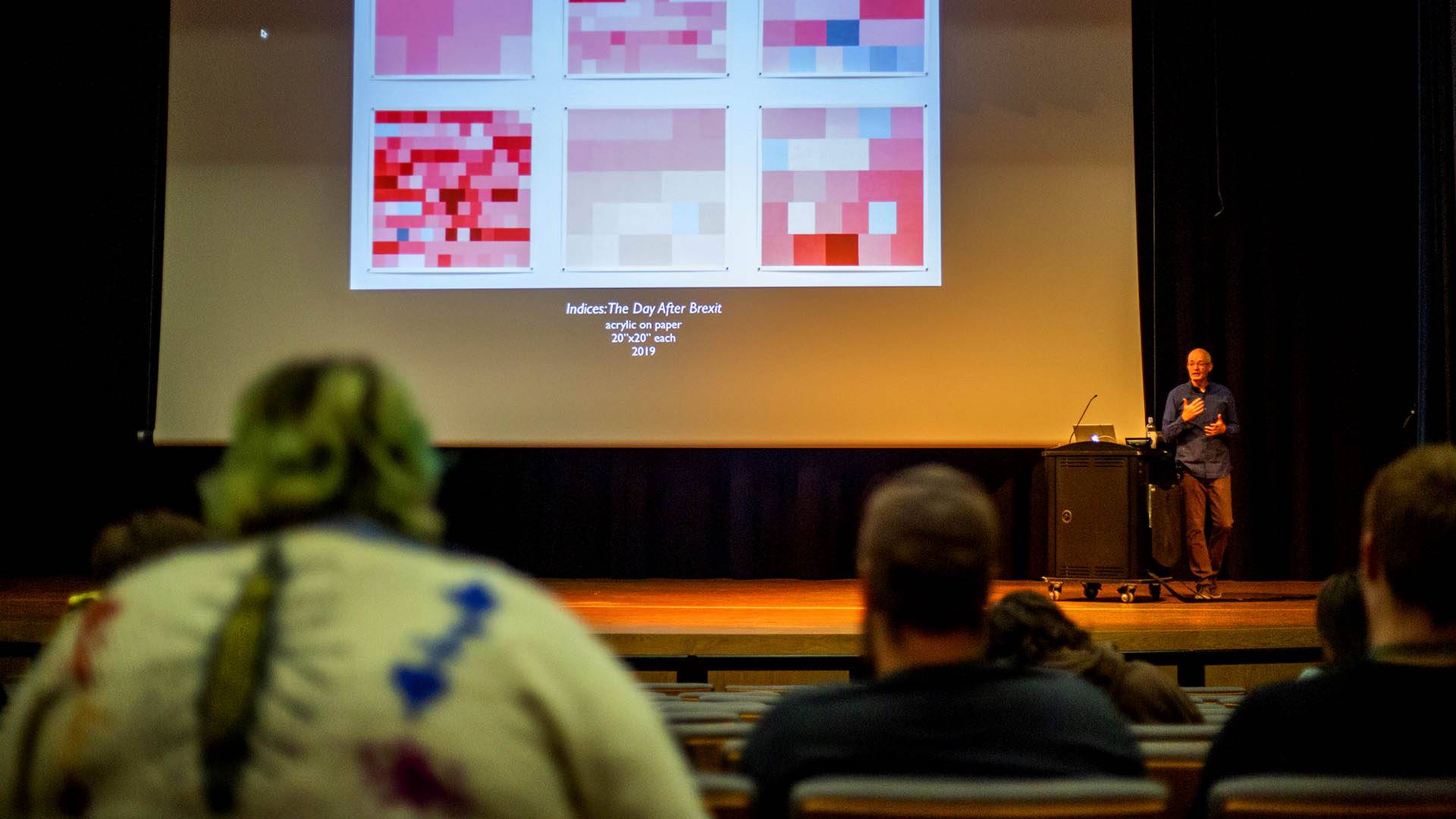
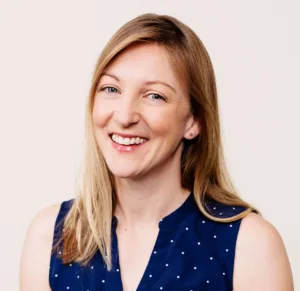 Wednesday, Apr. 10, 7:00pm – Kinnison Hall
Wednesday, Apr. 10, 7:00pm – Kinnison Hall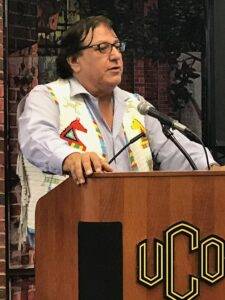
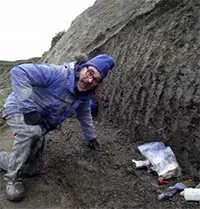 Wednesday, Mar. 13, 7:00pm
Wednesday, Mar. 13, 7:00pm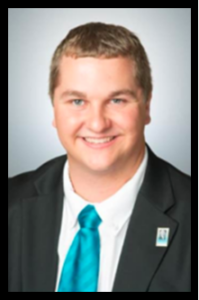
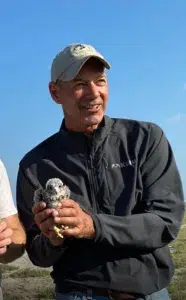 Wednesday, Feb. 7, 7:00pm
Wednesday, Feb. 7, 7:00pm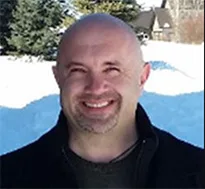 Thursday, Nov. 9, 6:00pm
Thursday, Nov. 9, 6:00pm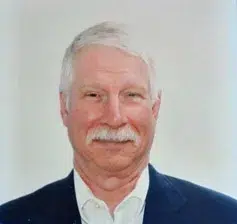 Wednesday, Dec. 6, 7:00pm
Wednesday, Dec. 6, 7:00pm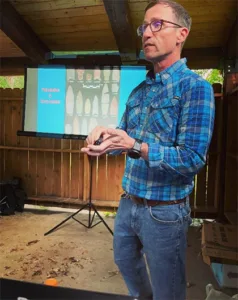 Wednesday, Oct. 18, 7:00pm
Wednesday, Oct. 18, 7:00pm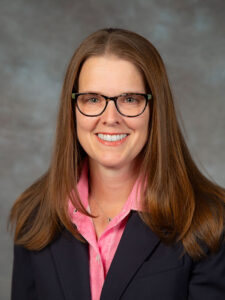 Thursday, Sept. 21, 6:00pm
Thursday, Sept. 21, 6:00pm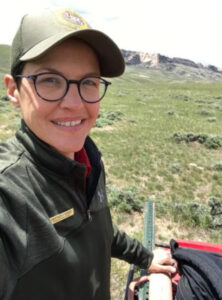 Wednesday, Sept. 20, 7:00pm
Wednesday, Sept. 20, 7:00pm